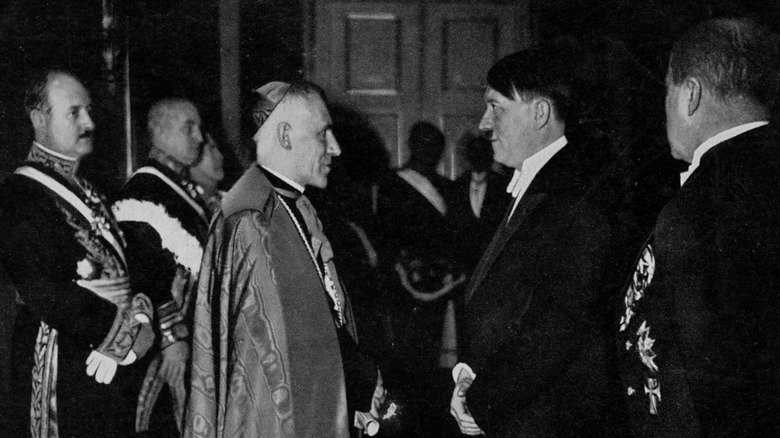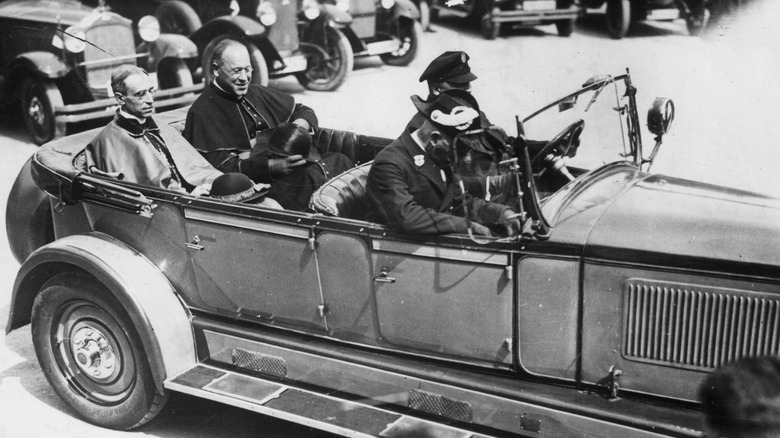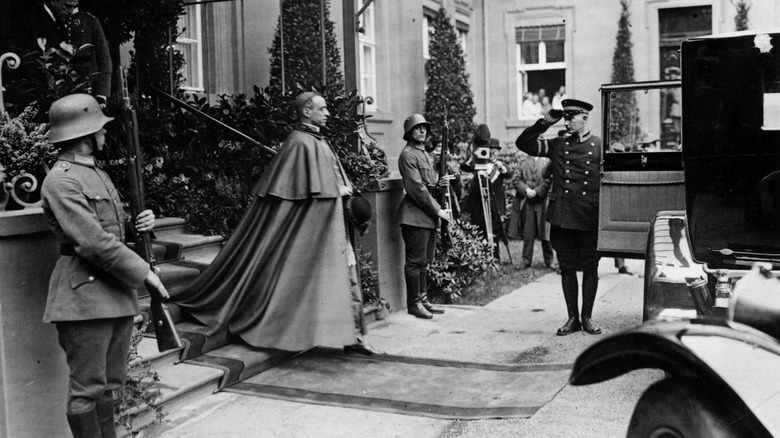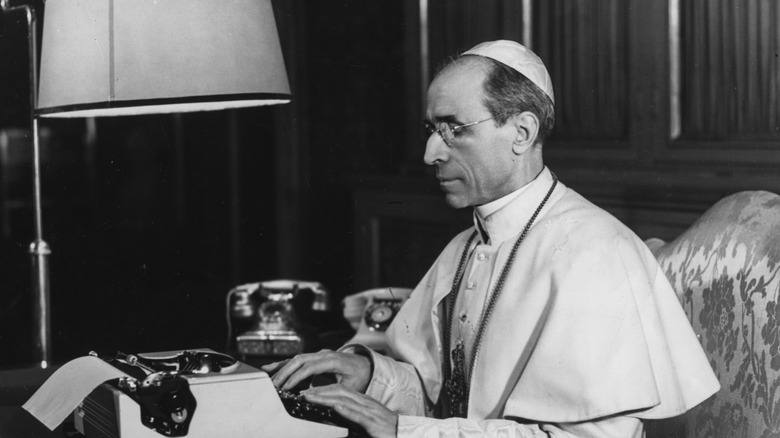How The Vatican Helped Nazis Escape During World War II
The world scrambled to return to normal after the death and devastation of World War II, while the Allied victors sought ways to punish the Nazis for their crimes against humanity across and preceding the global conflict. While some were captured, imprisoned, and executed, many managed to flee Germany and live their lives away from justice's grasp. According to The Guardian, new evidence shows that both the Red Cross and the Vatican helped Nazis and their collaborators escape from their Allied conquerors to a life of freedom, either by mistake or as part of an immoral plan to preserve Catholicism's power in Europe and the world at large.
Some of this help was unwitting. Over 8,000 Nazis were able to travel to Britain and Canada because of mistakenly approved travel documents from the Red Cross — something the organization admitted to and apologized for, blaming overworked administrators. Not every Nazi that reached freedom was an accident, though: The Vatican had a hand in sending thousands of Adolf Hitler's henchmen to a peaceful post-war life by giving them false identities in a purported scheme to return Christianity in Europe to the peak of its powers. And the number of accidental approvals on the part of the Red Cross seems to be much higher than previously admitted. Although Britain and Canada took around 8,000 Nazis in 1947, most made their way to Spain and the Americas. In particular, many sought refuge in Argentina, which ironically took in a significant number of Jewish refugees as well.
The Pope was involved in helping Nazis escape
While the Vatican had an interest in preserving former Nazis within Europe, the Pope himself had his reasons for keeping Adolf Hitler's followers alive and well. Pope Pius XII was staunchly anti-Semitic and anti-Communist, and as one of his first acts as the supreme pontiff, he rehabilitated a French far-right fascist group condemned by his predecessor (via Owlcation). The length of his involvement in the Nazi migration is not fully known. But his inaction against the Holocaust and preference for Nazis in South America to aid anti-communist governments means it is very likely that he would have approved the Vatican's methods. In addition, the Red Cross was overwhelmed with refugees and asked the Vatican to help deal with the thousands of travel papers that piled on their desks. The result was the spread of Nazis across Europe, North America, and South America — sometimes along with escaping Jews.
The Red Cross was not entirely ignorant of the Nazis crossing borders. Though the organization has since condemned their inaction, at the time it deemed itself too busy to fully deal with the situation. Meanwhile, a Nazi-sympathizing bishop named Alois Karl Hudal created a series of "ratlines," churches, and monasteries that Nazis could flee to and acquire false papers in a cruel and sinister twist on the Underground Railroad. Hudal thought himself a charitable man, rescuing scapegoats of the war, yet reportedly personally secured the safety of significant Holocaust officials. Ultimately, his actions show how far the Vatican strayed from morality during World War II and its build-up.
Organized paths for escaping Nazis stretched across Europe
The ratlines extended across Europe and helped some of the most despicable war criminals of the Second World War escape into peace and obscurity in the years following 1945. Franz Stangl — a commander of two extermination camps who is responsible for the deaths of over 1 million Jews — was escorted to the Vatican and personally met by Bishop Alois Karl Hudal, who saw Stangl off to Syria and eventually Brazil (via DW). The networks of sympathetic houses and hideouts, many of them churches, stretch over the Alps and helped thousands of Nazis scurry from Austria to Genoa where they could board ships to sail across the Atlantic. The escape system was so heavily associated with the Catholic Church that they were also referred to as the "monastery route."
From the monasteries, Nazis would receive false papers from the Church that meant receiving a passport from the Red Cross was a mere formality. It was not a highly organized system and relied heavily on word-of-mouth and a lot of waiting around on the part of the escaping Nazis. Indeed, the entire operation would likely have fallen apart without the aid and guidance of the Church and its Nazi-sympathizing individuals like Hudal and Pius XII.
New evidence reveals the Pope knew about the Holocaust
While the extent of Pope Pius' XII's involvement in organizing the ratlines and escorting Nazis to safety isn't entirely known, his inaction before, during, and after the war aided Hitler's cause greatly. According to Smithsonian Magazine, newly opened documents from the long-closed Vatican archives reveal the Pope's silence surrounding the genocide of the Jews was not one out of ignorance: He learned of the Holocaust in late 1942, albeit having heard from his pontiff that the reports were exaggerated. Still, he followed advice to tell the American government that they could not confirm Nazi war crimes.
By feigning ignorance of the Holocaust and failing to shed light on the atrocities, the smuggling of its perpetrators was made much easier. Villains such as the Holocaust's organizer Adolf Eichmann, Auschwitz doctor Josef Mengele, and Gestapo chief Klaus Barbie all made it to the shores of South America with their Church-earned passports in hand. While some — like Eichmann — would eventually be captured, tried, and executed, others lived the rest of their lives in their adopted homes, fading into obscurity, never to face justice for their heinous crimes.



